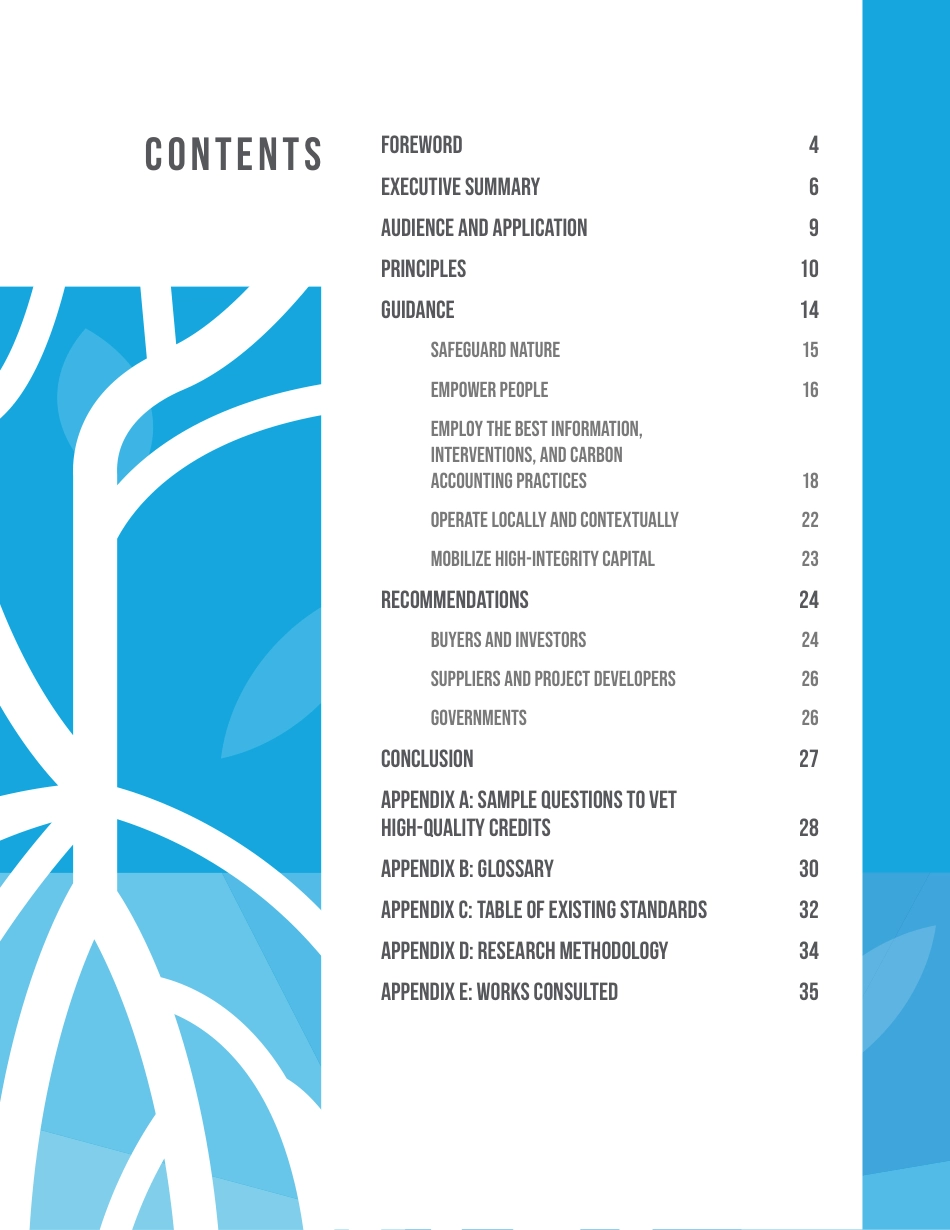High-Quality Blue Carbon Principles and GuidanceA Triple-Benefit Investment for People, Nature, and ClimateForeword 4Executive Summary 6Audience and Application 9Principles 10Guidance 14Safeguard Nature 15Empower People 16Employ the best information, interventions, and carbon accounting practices 18Operate Locally and Contextually 22Mobilize High-Integrity Capital 23Recommendations 24Buyers and Investors 24Suppliers and Project Developers 26Governments 26Conclusion 27Appendix A: Sample Questions to Vet High-Quality Credits 28Appendix B: Glossary 30Appendix C: Table of Existing Standards 32Appendix D: Research Methodology 34Appendix E: Works Consulted 35ContentsForewordClimate change is the biggest challenge humanity has ever faced, and it is unfolding at the same time as vast, human-caused biodiversity loss, as well as tremendous human suffering, inequality, and injustice. The scientific community overwhelmingly agrees that we must dramatically cut our greenhouse gas emissions within this decade to avoid devastating consequences as well as reverse biodiversity loss. Protecting and restoring ecosystems rich in carbon and biodiversity can provide up to ten gigatons CO2e (carbon dioxide equivalent) emissions reductions (Grissom et al. 2017), roughly 30 percent of the mitigation needed to address this climate crisis. Coastal ecosystems like mangrove forests, tidal marshes, and seagrass meadows sequester and store vast amounts of carbon and are now being recognized for their role in mitigating climate change (International Union for Conservation of Nature 2017). These ”blue carbon” ecosystems serve as barriers against storm surges, flooding, and erosion. They provide critical habitats, clean our air and water, and regulate our climate by...



